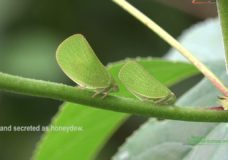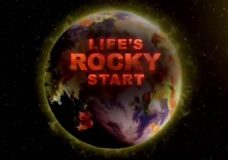Cone-headed Planthoppers (Acanalonia conica) on Passion Flower
This observation has been registered in the iNaturalist database with the following accession 105647409. Observed on August 9, 2014 at the Georgia State Botanical Garden in Athens, GA, USA. Here, you can see a number of cone-headed planthoppers (Acanalonia conica) feeding on a passion flower vine (Passiflora incarnata). The passion flower family (Passifloraceae) is well known for its sugar producing glands called extrafloral nectaries. These nectaries attract ants and here in this observation we see two species of ants (Formica […]

















Recent Comments